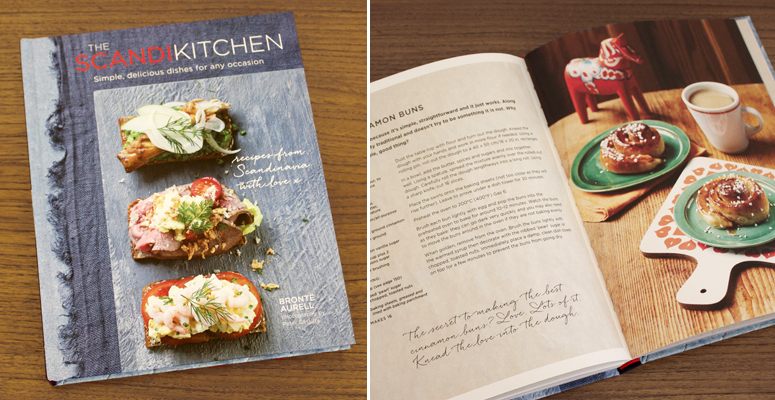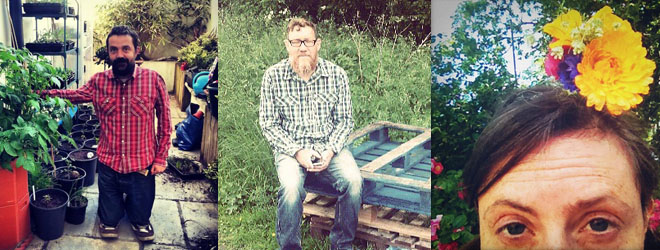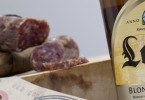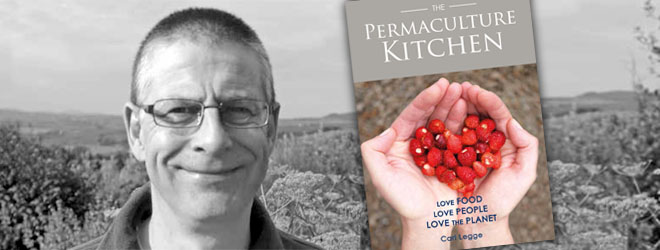Bronte Aurell is the founder of Scandi Kitchen, a food retailer and café specialising in Scandinavian cuisine. Her new book, also called The Scandi Kitchen, is packed with simple to make, tempting recipes from throughout Scandinavia – from smörgäsbords to cinnamon buns. We caught up with her to discuss food, foraging and booze…
Why do you think Scandinavian culture and lifestyle is so popular in the UK right now?
It has been brewing for quite some time. Right now, we are – in my opinion – seeing a more mainstream Scandinavian influence, rather than gourmet fancy cooking. I think people are finally ready to embrace Scandinavian food in the home. We’re seeing a huge interest in everything from crispbread to pickled herring.
You’ve brought a large dose of Scandinavia to the UK through your café, shop and now the book. What do you still miss about home?
Aside from my Mum and Dad and sisters, I miss the seasons. I love spring and autumn in Scandinavia, the seasons are so very pronounced there. Food wise, I miss my Mum’s cooking and the smell of her warm kitchen. It is my ultimate comfort smell and feeling, walking in and finding her by the stove.
How have Scandinavia’s long, dark winters shaped traditional cooking?
That’s a hard question. Scandinavia is 3 ½ times the size of Britain and our countries vary greatly from the northern tip of Norway to the south of Denmark. I think it is easier to describe our cooking as having evolved through working the lands. Our food is hearty and wholesome, it is never ever fancy. In the north, where the winters are long and hard, a lot of cured and dried meats were used in dishes… In the south, where the climate is much more like the UK, different dishes evolved and shaped our culture. Certain things link us together, such as our love of all things herring, our fishing, our love of salted and cured foods.
What are your favourite foraging items back home and have you managed to get out foraging in London?
When I am in Sweden, usually in the summer, I love going out for mushrooms and wild strawberries and bilberries. In London, not so much, no, except blackberries, damsons and there is a huge park up past Neasden with a load of apple trees that nobody seems to care about. But it’s mainly fruit and berries. I live in Kensal Green, so there isn’t so much opportunity around here.
What are the most popular Scandinavian items in your shop?
Crispbread – we are really seeing UK consumers realising it is a great every-day bread and not a diet bread. In Scandinavia we eat it for breakfast and lunch, not to lose weight. People also love our herring, cheeses and of course Scandinavian smoked and cured salmon, which taste quite different from the supermarket stuff here.
A lot of your recipes feature pickled beetroot. What’s so special about it?
Ha ha, beetroot are simply one of our staples. Maybe there are so many recipes with beetroot because I love it!
No, in all seriousness, beetroot is one of the vegetables we eat a lot because it is hearty and easy to store and come by in Scandinavia.
Do you have any other favourite pickled veg?
I love most things pickled, to be honest. Pickled cauliflower is a favourite right now. I had pickled watermelon the other day with anchovies, which was lovely.
You have a recipe for the mulled wine ‘glögg’ in your book (we’ve also got one in our book). How much does the recipe vary throughout the various countries and communities?
Mulled wine was invented to get rid of the less good wine of the season. People would add sugar and spices and heat up – and these vary regionally. In Germany, glühwein hasn’t often got ginger, and in Scandinavia, we add cardamom and extra cinnamon. Every mulled wine drinking country’s recipes differ.
In Scandinavia, I think our recipe is pretty standard – cinnamon, ginger, cloves and dried Seville orange peel.
Your book highlights a lot of national celebrations, which all look like fun social affairs. Apart from glögg, what other booze gets consumed at these events?
We love aquavit, which is a strong grain based alcohol. We enjoy shots of ice cold aquavit with herring as part of a larger smörgäsbord. Basically, you’ll find aquavit at all high seasons. In some families, singing is not optional.
And finally, do you prefer liquorice sweet or salty*?
Always salty, so salty it makes your face scrunch up. The saltier and stronger, the better. I can take it.
*Salt liquorice, or salmiak, is flavoured with ammonium chloride which gives it a face-puckering, astringent salty taste. It’s an acquired taste but well worth getting over any initial reaction to it – plain, sweet liquorice will soon seem bland in comparison.
The Scandi Kitchen is published by Ryland, Peters and Small. Visit their website for more information: www.rylandpeters.com/the-scandi-kitchen
To order crispbreads, pickles, liquorice and more visit www.scandikitchen.co.uk
And click here for a recipe from the book – super-easy chocolate oat treats









… [Trackback]
[…] Read More here: twothirstygardeners.co.uk/2015/09/an-interview-with-the-scandinavian-food-expert/ […]